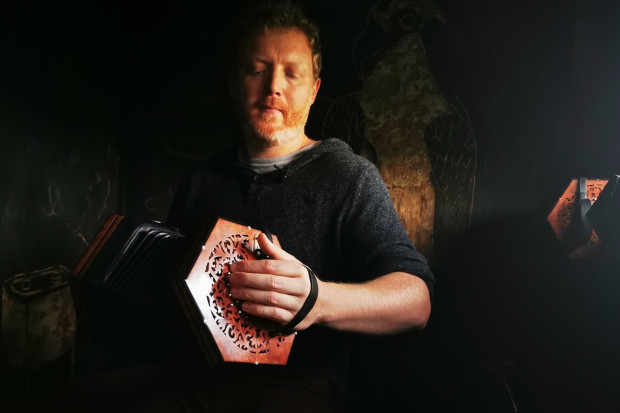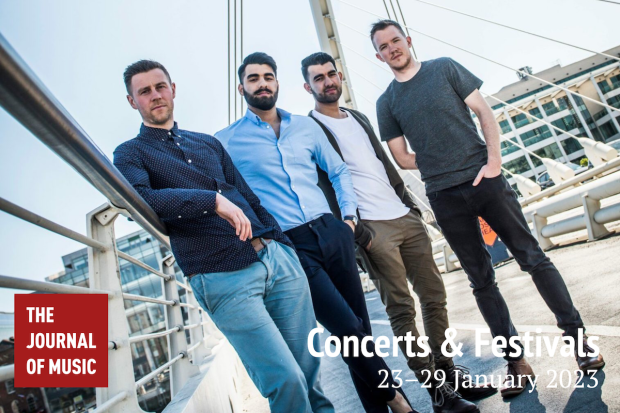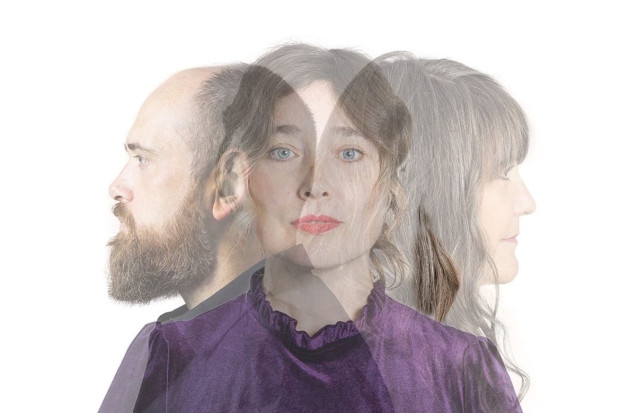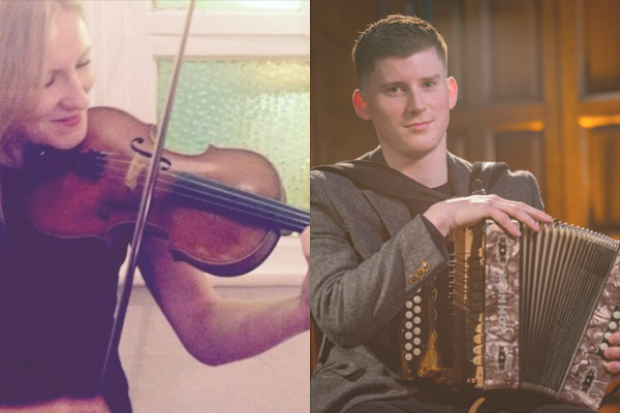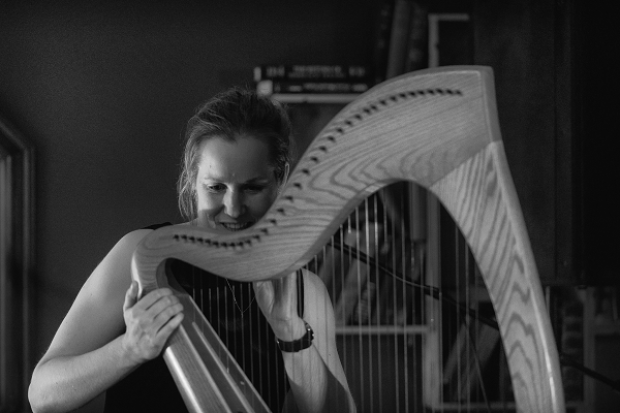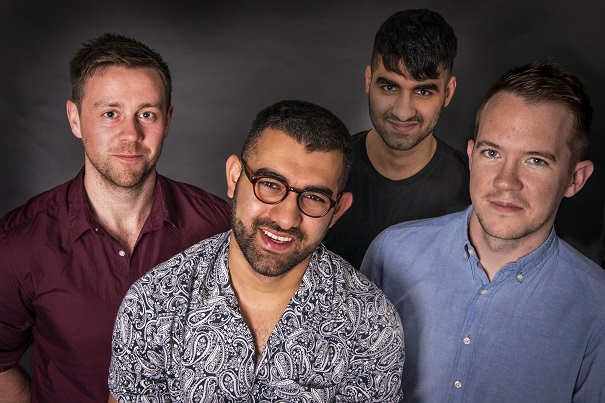
Nava
Crossing Distance
Sojourns: Volume 1 is the second release from Nava. It continues the band’s musical explorations between Irish and Persian music that began with their 2017 debut recording Tapestry.
The members of the band are Paddy Kiernan on 6-string banjo, Niall Hughes on acoustic guitar and electric bass, and Iranian-born brothers Shahab Coohe, who plays the santoor, and Shayan Coohe, who perform on tar, tombak, daf and bass clarinet. The santoor is a type of hammered dulcimer used in Persian music as well as in other middle-eastern and eastern European musical traditions. The tar is an ancient plucked string instrument. The word tar means ‘string’ in Persian and is the etymological root of nouns for other string instruments, for example the Indian sitar or the guitar. The tombak is a traditional Persian goblet drum commonly used throughout the middle east as far as Afghanistan, while the daf is a Persian frame drum that looks like a large tambourine.
The instruments come together in a collage-like musical creation that mixes melodic fragments from the Irish and Persian musical traditions, bringing to existence sonic realities that were once distant, both culturally and geographically.
For example, the first track, ‘Norouz’, is a modern Irish jig composed by Shayan, performed in unison with the santoor over a plucked base that creates a drone-like effect. The santoor interjects the melody with fast melodic lines clearly rooted in the middle eastern tradition. The track doesn’t resolve and this suspended feeling leads the listener into the following track, ‘Papu Polka’, which is once again an original composition by Shayan and has a captivating transition to the upbeat polka rhythm.
Improvised melodies
In ‘Cuckanandy’ Nava just sketch the traditional slip jig. The tune is performed in fragments, as a call and answer between the guitar and banjo with space left between sections. The tar and the santoor add fragments of improvised melodies creating a crescendo effect that eventually returns to the atmosphere of the opening of the track. I found ‘Cuckanandy’ particularly interesting as it uses a popular traditional melody as a frame for the band’s improvisational journey. The following ‘Coohe’s Reel’, another of Shayan’s compositions, is again rooted in modern traditional music and is performed over a base that seems to be a traditional Persian rhythmic mode (maqam).
‘The Blue Girl’, jointly composed by Niall Hughes and Shahab Coohe, is an evocative air that creates an open acoustic soundscape. Listening to it, it felt like a melody from a movie soundtrack, perhaps because it reminded me of Ryuichi Sakamoto’s Merry Christmas Mr Lawrence. ‘Cerulean’ explores a similar acoustic concept, creating a sonic space across cultures on which the band freely improvises. The false harmonics played by the viola (Ultan O’Brien) over the chords and arpeggios performed by the banjo, guitar and tar create a soundscape that is both meditative and mesmerizing. For me, ‘Cerulean’ is perhaps the most interesting piece on the recording. Here the band intentionally creates an atmosphere that crosses the senses, evoking sound notions of the sea and of the colour blue. In the last two tracks, with the traditional Persian folk melody ‘Sketches of You’ and Kiernan’s composition ‘The Orb’, the band once again presents fragmented improvisation, which can be a bit repetitive. It feels as if the last four tracks belong together and could have been recorded as one, in a longer performance which structurally would perhaps fit better with traditional Persian music than with Irish music.
Throughout Sojourns: Vol. 1, Nava blend together elements from modern Irish traditional music, pop music, classical techniques, and traditional and classical Persian music, offering an interesting snapshot of the musical experience lived by the quartet. Musically, the feature that I found most fascinating is the unique texture created by different timbres of the various string instruments, especially the false harmonics performed on the viola in ‘Cerulean’. Socially, the music played by Nava is an important document that directly references the contemporary global version of migration processes and shifts of cultural borders that has existed since the beginnings of humanity. It is a soundscape that illustrates modern Irish society.
Sojourns: Volume 1 is available on CD here. For more on Nava, visit www.navatheband.com.
Published on 19 December 2019
Massimo Cattaneo is currently completing his PhD in Spanish and Ethnomusicology in NUI Galway (co-supervised by the University of Limerick). He is a recipient of the NUI Galway Doctoral Fellowship. Massimo’s research focusses on the introduction of flute in flamenco and its effects on identity and on notions of purity and authenticity. A former participant of the Access Music Project, Galway, he has qualifications in music theory, piano and vocals. From 2010 to 2014, Massimo wrote, presented and produced The Spinning World, a world music radio programme for Flirt FM. He has also worked in music production with Improvised Music Company. Massimo plays Irish traditional flute, flamenco guitar and bass. Massimo was a participant in the Journal of Music/Galway City Council Music Writer Mentoring Scheme.












